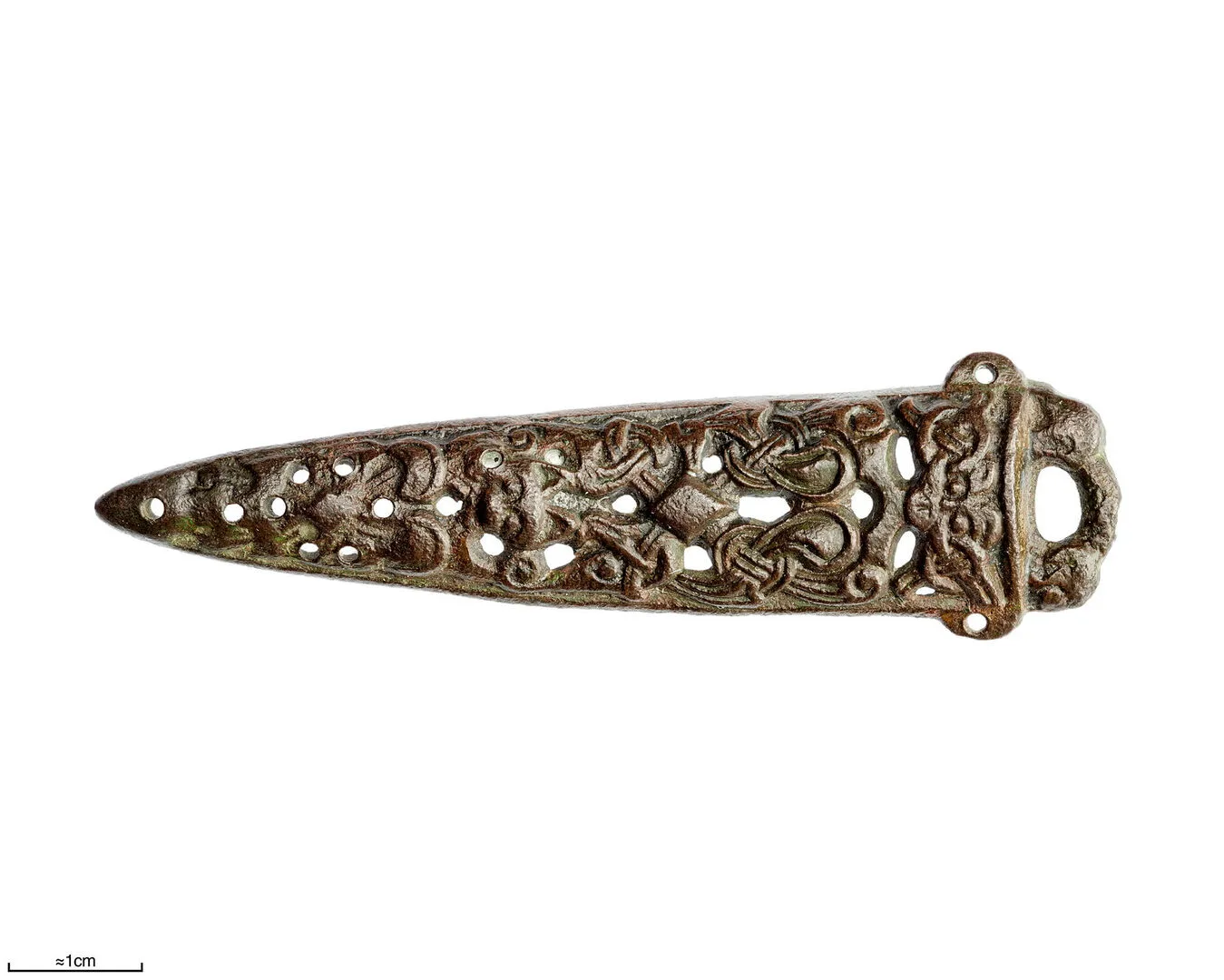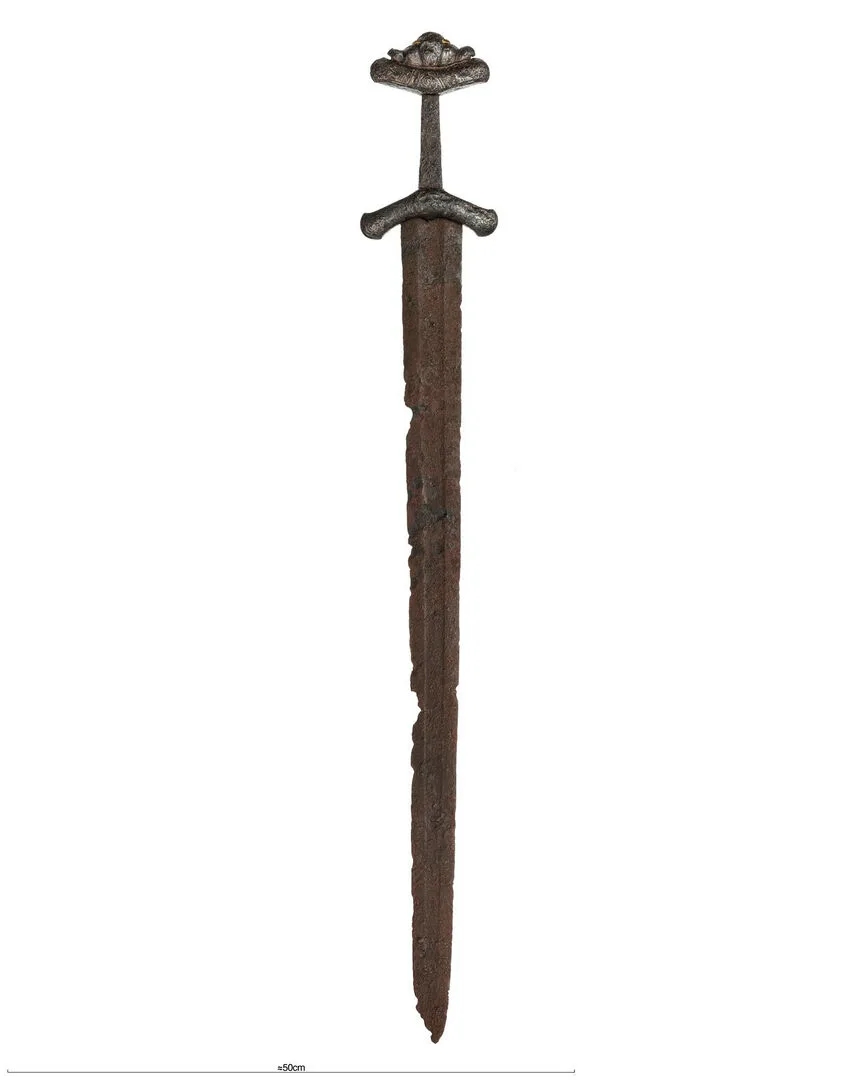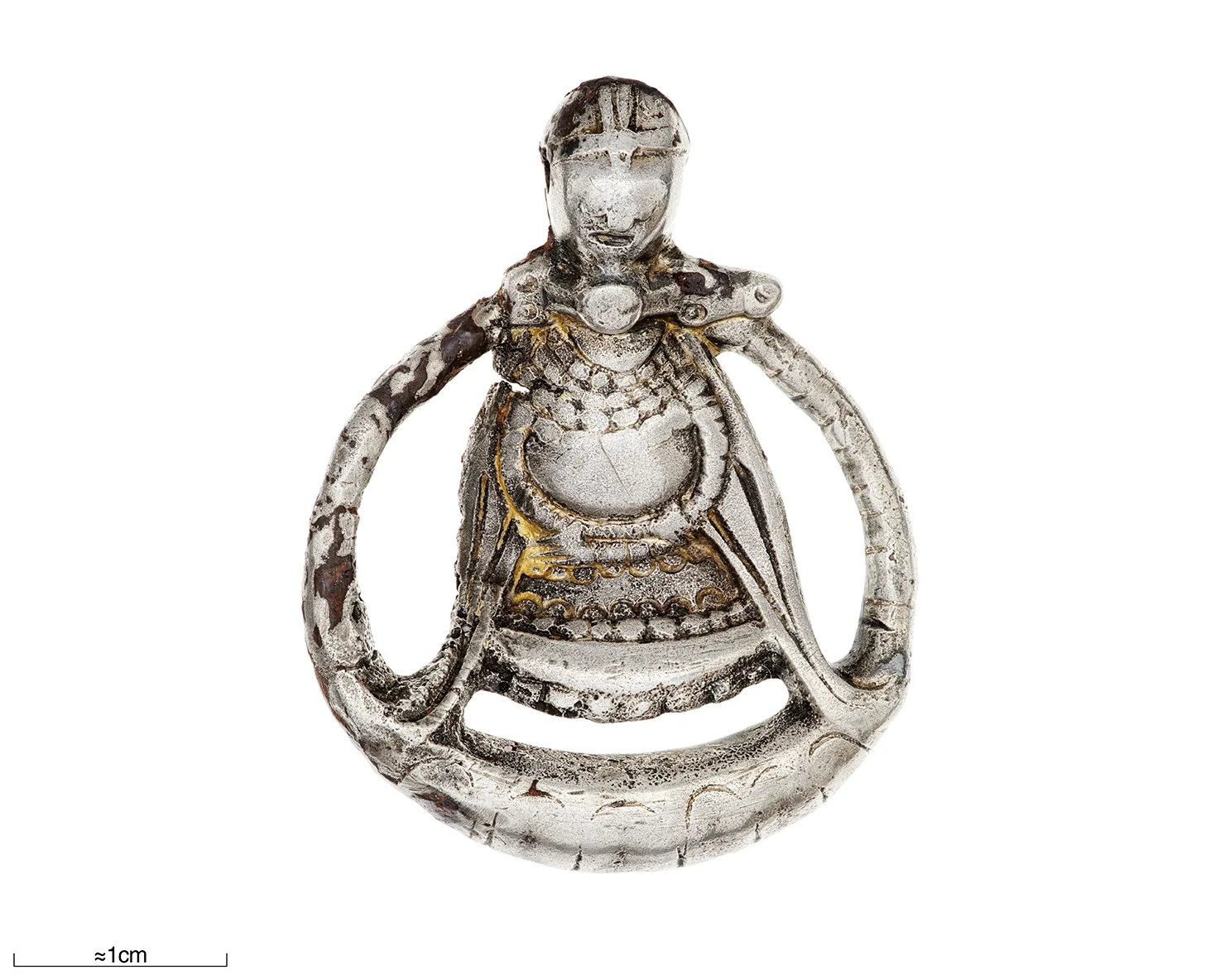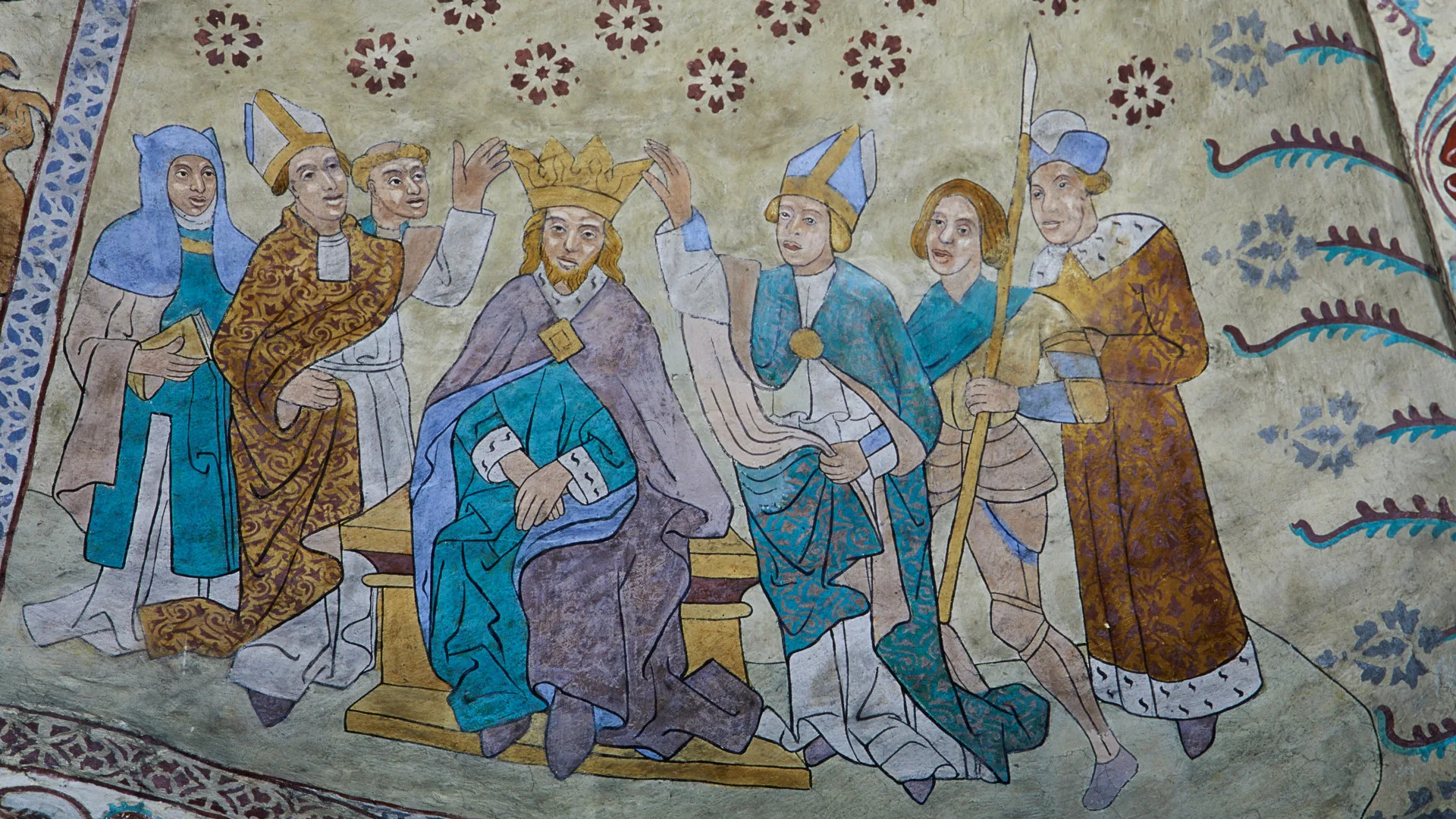Men in the Viking Age
Iron Age
500 BC – AD 1100
Viking Age
AD 800 – AD 1100
Middle Ages
AD 1050 – AD 1520
In reality, however, such items appear in only a minority of men’s graves. Most men seldom or never bore arms, owned no horse, and did not travel aboard warships. Most men in the Viking Age led ordinary lives as farmers and family providers; only the aristocracy enjoyed the prestige of warfare and the thrill of the hunt.
Some men lived as trained warriors in the retinue of a nobleman. Aristocratic men could be buried with grand ceremonies, just like wealthy women. Some of the objects in the collections were from aristocratic graves.

Decorative mount or fitting for fire steel
Was attached to or covered a fire steel, a striker used for making fire. The exquisite craftsmanship was likely a symbol of status and wealth. Found at Grötlingbro, Gotland.
On view at Historiska museet in the exhibition Vikingarnas världFind this object in display 35, Vikingarnas värld Monter 35
Gender roles in the Viking Age
Medieval Icelandic sagas describe a strict gender-based division of social roles and daily tasks on the farm. Men were expected to plough the fields. They represented the family at the ting, the local assembly of free men. Men were to manage disputes, trade, and conflicts. Icelandic law forbade women to wear men’s clothing, and vice versa.
Reality was surely more complex. The fact that gender norms existed, and that they mattered, can be seen for instance in the different kinds of objects placed in men’s and women’s graves. But who did what, and who decided what, must have varied greatly from farm to farm and district to district.
The man from Sollerön
A man with the social and economic means could own a set of weapons, hunt for pleasure and status, and parade on horseback. One such example is grave 2 from Bengtsarvet on Sollerön in Dalarna.
The man was buried with weapons: sword, spear, and axe. The grave also contained arrowheads for hunting, along with horse equipment such as a curry-comb, which is a grooming tool used for cleaning a horse’s coat, and parts of a bridle.

Viking Age sword
Double-edged sword found in a male grave at Bengtsarvet, Dalarna.
On view at Historiska museet in the exhibition Vikingarnas världFind this object in display 85, Vikingarnas värld Monter 85





